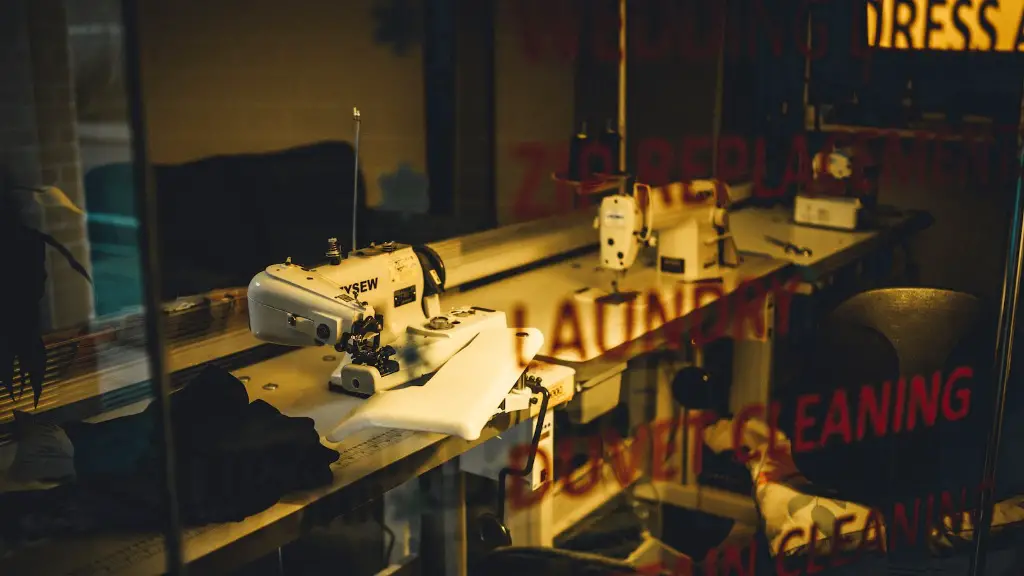Common sewing machine Malfunctioning
No matter how experienced a tailor is, or how high-tech the sewing machine is, it could still experience unexpected malfunctioning. Sewing machines are one of the most vulnerable tools used in tailoring; they tend to break down more than any machine used in carpentry or metalwork. A sewing machine can malfunction in various ways, but one of the most prevalent is when a sewing machine won’t stitch.
What Causes Sewing Machine Won’t Stitch
There are numerous elements that could be the main reason why a sewing machine would not stitch. One of the most common is faulty threading. Threading a sewing machine can be a difficult process, and a single mistake made in its threading can cause the threads to become entangled, making it difficult for the machine to move its needle. This ultimately means that it won’t be able to stitch.
Inaccurate bobbin tension should also be considered. If the bobbin tension is too tight or too loose, the needle will be unable to push the thread through the fabric, resulting in a poor quality of stitching. When this happens, the user should first study the manual to change the bobbin tension and then adjust it accordingly.
Another element that might cause the sewing machine to not stitch is a dull or bent needle. A dull needle will easily lose its sharpness, due to the kilometers of fabric that have been sewed with that same needle. On the other hand, a bent needle is a result of negligence in the use of the sewing machine, for instance, if the user sews over pins that are placed on the fabric.
How to Troubleshoot a Sewing Machine Won’t Stitch
When a sewing machine is out of order, the first thing to do is to ask for an expert’s opinion in order to identify the root of the problem. It is essential to try and understand the malfunction before attempting to repair it. However, even for a non-expert it is still possible to identify some malfunctionings of a sewing machine.
To troubleshoot a sewing machine that won’t stitch, one must first check the quality of its threading; in case the thread has been entangled in the machine, it must be removed and replaced with a new thread. Second, bobbin tension should be adjusted accordingly, a tension gauge or manual may be of great help. Third, needles should be checked constantly and should be replaced with a new one once one tenth of it has been used up.
Safety Tips
Here are a few safety tips that a person should adhere to when handling or repairing a sewing machine: one must remember to remove all pins from the fabric before sewing, never force the machine’s presser foot to down and always unplug the machine when cleaning it. Moreover, always use the correct needle for all types of fabrics.
Unexpected Malfunctioning
It is generally recommended that a professional repair a sewing machine in case of unexpected malfunctioning. However, if one finds themselves unable to find a professional, they should consult a manual or video tutorials regarding how to fix the problem, such as how to replace a needle if it has been broken.
Benefits of Professional Repair
It is strongly recommended to hire a professional to repair a sewing machine in cases of malfunctioning, as they can correctly identify the root cause of the malfunction and provide the exact and most efficient solution.
Things to Consider When Repairing a Sewing Machine
Before attempting to repair a sewing machine, it is important for the user to keep in mind that a sewing machine is full of delicate parts and that as a result, even minor mistakes made by an inexperienced user can damage the machine further. Moreover, when referring to a manual, it is essential to check and make sure that the manual is accurate and suitable for the specific model of sewing machine that is being fixed.
Do-It-Yourself Repair
For users who prefer a do-it-yourself approach to fixing a sewing machine, they should remember to consult a manual before attempting to fix it, as it is essential to understand what tasks need to be done in order to repair the machine. Furthermore, they should also check to make sure that they have the necessary tools and parts to effectively and safely repair the machine, such as screws, tape or lubricants, and should consider whether or not the repair is worth the risk before attempting to fix it.
Protective Clothing
When repairing a sewing machine, it is essential for the user to wear the correct protective clothing, for example, safety goggles, proper shoes, and gloves. This not only prevents the user from getting injured, but also protects them from the harmful oils and lubricants that usually flow from the inner parts of the sewing machine.
Using Genuine Parts
In addition to protective clothing, users should also use genuine parts when repairing a sewing machine. Using counterfeit or non-genuine parts may result in further damage to the sewing machine, as the parts may not be suitable or compatible with the machine.
Cleaning Procedures
Finally, users should also adopt a regular cleaning regimen in order to guarantee their sewing machine’s optimal functionality and durability. This includes dusting off the machine by a damp cloth, lubricating the sewing machine parts and vacuuming the bed of the machine. These three cleaning steps should be done once a week in order to keep the machine in good condition and always prepared for a prolonged use.


